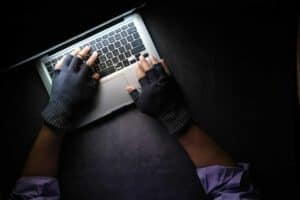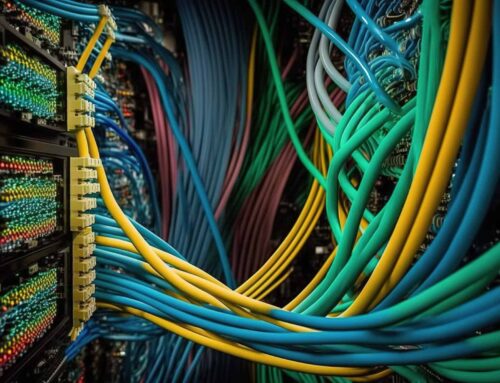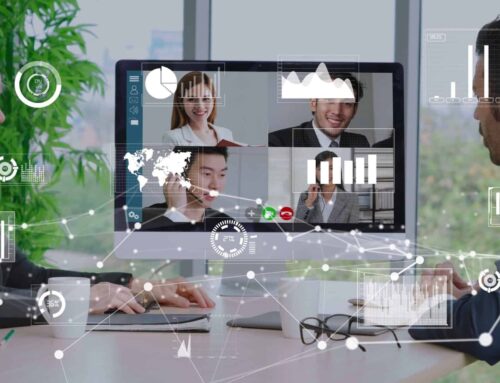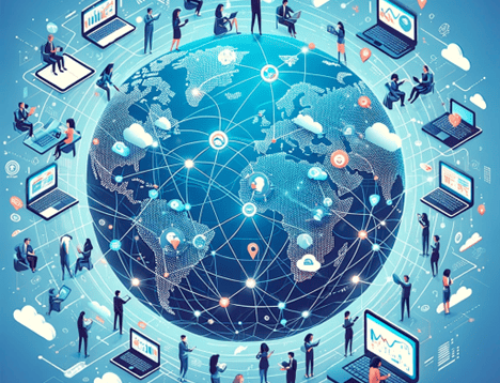Secure Remote Access: What is it and why it’s important in a hybrid work world?

Understanding Secure Remote Access
Wondering about how secure remote access works? This technology allows users to securely connect to their organization from outside its physical boundaries. Using secure access remotely means users can access company data and resources flexibly. With secure remote access, users can stay productive and connected with their organization anywhere, anytime.
Secure remote access creates a secure connection between the user’s device and the corporate network. There are many types of secure remote access technologies, such as:
Virtual Private Networks (VPNs)
VPNs create a secure connection between the user’s device and the corporate network through an encrypted tunnel. Using authentication protocols and encryption algorithms, VPNs help protect sensitive user data from being intercepted or accessed by unauthorized parties.
Two-Factor Authentication (2FA)
Two-factor authentication (2FA) enhances security when logging into online accounts. 2FA requires users to provide two different authentication factors, such as a PIN or password and a one-time code sent to their mobile device.
Single Sign-On (SSO)
Single Sign-On (SSO) provides a streamlined and secure authentication process for accessing multiple services with one set of credentials. This eliminates the need for users to remember multiple usernames and passwords, while also providing an additional layer of security.
Privileged Access Management (PAM)
Privileged Access Management (PAM) restricts access to privileged accounts and provides additional authentication methods like multi-factor authentication (MFA). PAM also monitors user activity on the system to detect any suspicious activities and alert administrators.
Importance of Secure Remote Access in a Hybrid Work World
Since the COVID-19 pandemic and the rise of remote and hybrid work, secure remote access is more critical than ever! Companies must ensure that their remote employees have access to the same applications and data they would in-office.
Secure remote access is a practical way for organizations to improve their remote work security. There are many benefits, including:
- Boosting productivity and flexibility
- Increased cost savings
- Reduced infrastructure requirements
- Improved employee satisfaction
- Better work-life balance
While the benefits of remote work are numerous, there are also a number of risks of remote work. Within the context of hybrid and remote work, these generally include cybersecurity threats and regulatory compliance considerations.
To mitigate the security risks associated with remote work, organizations must implement technology solutions to minimize vulnerabilities. This could include:
- Implementing strong passwords
- Two-factor authentication protocols
- Using secure file-sharing programs or encryption services
- Setting up firewalls and antivirus software
- Conducting regular security audits
- Training employees on best practices for working remotely
By taking the necessary steps to protect their data and systems from malicious attacks, organizations can ensure they remain secure while still taking advantage of the many benefits of remote work.
Implementing Secure Remote Access
Best practices for implementing secure remote access in a hybrid work environment are:
- Assessing security needs and evaluating solutions
- Establishing policies and guidelines for remote access
- User authentication and authorization
- Monitoring and auditing remote access activities
- Incident response and Remediation
As they implement secure remote access, organizations need to also regularly assess their security needs. By understanding these needs, they can then evaluate the best solutions for meeting them and outline a clear path for getting them.
Also essential is the establishment of clear policies and guidelines for achieving privacy in remote access, (especially relating to data security concerns). Implementation of user authentication and authorization ensures that only authorized personnel have access to the materials.
Organizations must monitor and audit remote access activities to detect any potential security threats or suspicious activity. It’s also best practice to establish an incident response plan for responding to breaches, as well as have recommended remediation steps to prevent similar incidents down the road.
Secure Remote Access Technologies and Solutions
Some of the different technologies and solutions available for secure remote access include:
- VPN alternatives for privileged access
- Streamlined privileged session management
- Secure advanced web access
- Password management and vault access
- Zero trust architecture
Secure Remote Access Best Practices
Here are some tips for maintaining a secure remote access environment:
- Ensure that systems are regularly updated and patched to maintain a secure remote access environment.
- Implement strong password policies to ensure secure remote access.
- Train and educate employees on best practices for secure remote access through awareness programs.
- Utilize encryption and secure protocols for additional protection of remote access data.
- Monitor and analyze logs related to remote access activity for any suspicious activity or potential threats.
- Continuously assess and improve security measures surrounding remote access to stay ahead of emerging threats.
Case Studies and Success Stories
The hybrid and remote work world is here to stay, thus secure remote access solutions are needed now more than ever. Many organizations and companies are developing and implementing this technology to protect themselves and their data against cyber threats. A few of them include:
MICROS Systems
Designed for the hospitality industry, MICROS Systems builds point-of-sale products. Noting that the majority of cyber attacks focus on businesses such as hotels, they’ve implemented new tools from Bomgar to boost security in their POS units. They focus heavily on customer education to boost results.
TruGrid
Focusing on truly streamlining the secure remote actress process, TrueGrid delivers an exceptional customer experience through customized solutions. They offer a wide range of case studies that showcase ways they’ve improved their product and security, such as by boosting their VPN’s features according to user feedback.
Cisco
During the COVID-19 pandemic, New Castle Hotels and Resort was able to easily transition to remote work thanks to Cisco’s unique secure remote access options. Through the use of Ciso’s technology, there were firewalls and endpoint protection capabilities already in place to protect data while working remotely.
Data Security in Remote Access
Secure remote access is essential in the hybrid work world, as it allows employees to access their organization’s network from anywhere. This means that employees can work from home and stay productive while also maintaining the security of their organization’s data.
Secure remote access allows organizations to easily monitor which users can access their data remotely and enables convenient collaboration between dispersed teams. Through improving remote access data security, organizations with remote or hybrid workforces can reduce cyber risk and streamline productivity.
About i.e.Smart Systems
i.e.Smart Systems is a Houston, TX based technology integration partner that specializes in design and installation of audio/visual technology and structured cabling. For more than three decades, our team of in-house experts has partnered with business owners, architectural firms, general contractors, construction managers, real estate developers, and designers in the Houston market, to deliver reliable, scalable solutions that align with their unique goals.




